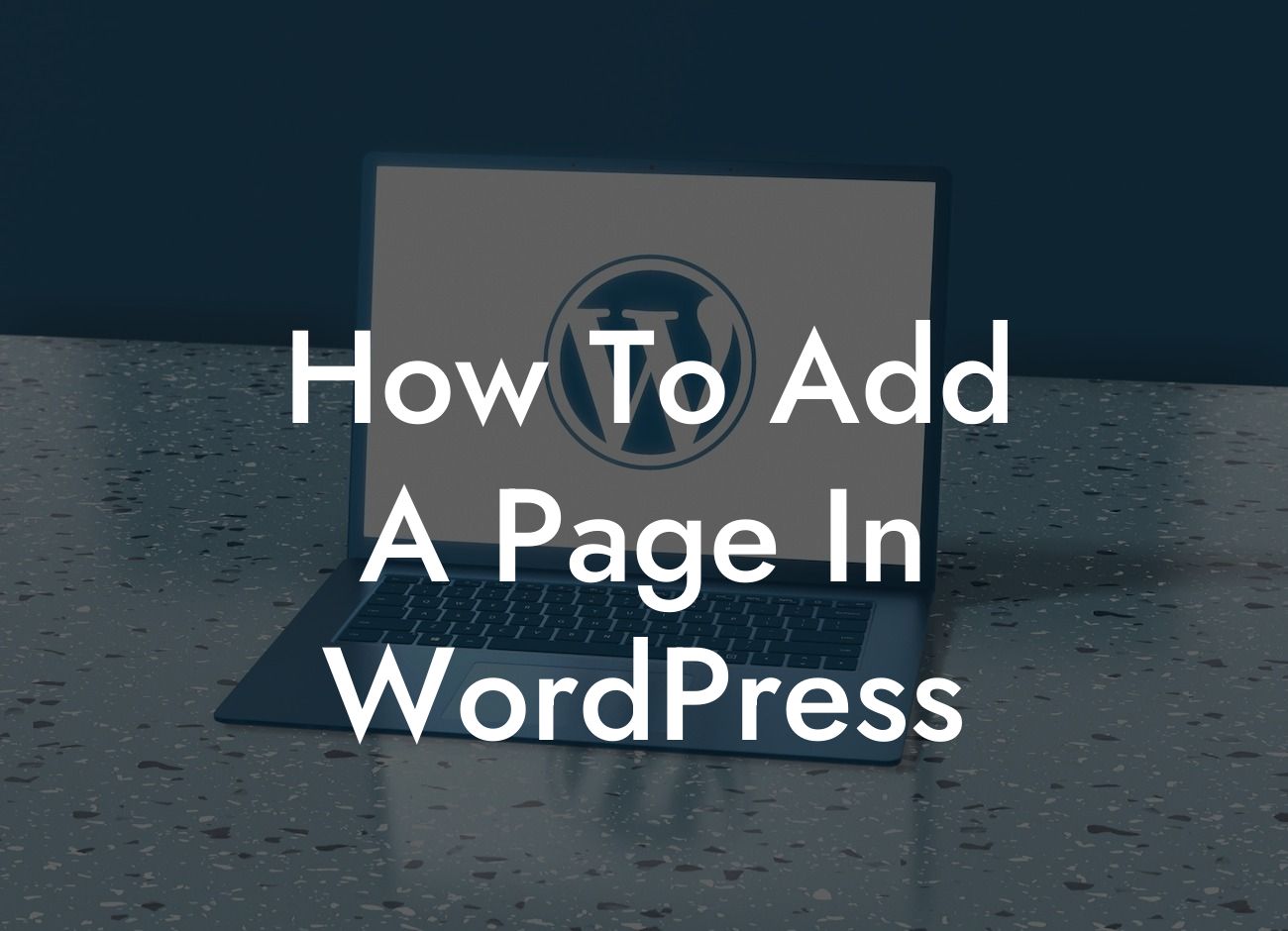Are you a small business owner or entrepreneur looking to enhance your online presence? Look no further! In this comprehensive guide, we will walk you through the process of adding a page in WordPress, the most popular content management system out there. At DamnWoo, our mission is to supercharge your success by providing top-notch WordPress plugins tailored exclusively for small businesses and entrepreneurs. Say goodbye to generic solutions and get ready to unlock the extraordinary!
Adding a page in WordPress may seem like a simple task, but knowing the right techniques and best practices can make a significant difference in your website's functionality and overall user experience. Let's dive right in:
1. Accessing the WordPress Dashboard:
To add a page, you need to access your WordPress dashboard. Simply log in to your website and navigate to the admin area by adding "/wp-admin" to your site's URL (e.g., www.yourwebsite.com/wp-admin).
2. Navigating to the Pages Section:
Looking For a Custom QuickBook Integration?
Once you are inside the WordPress dashboard, locate the left-hand menu and click on "Pages." This will take you to the section where all your pages are managed.
3. Adding a New Page:
To add a new page, click on the "Add New" button. You will be directed to the page editor screen, where you can enter the necessary information.
4. Page Title and Content:
Start by giving your page a title. This should be concise, descriptive, and relevant to the content you're planning to include. After that, you can start adding the actual content of your page. WordPress provides a user-friendly, intuitive text editor that allows you to format text, add images, embed media, and more.
5. Organizing Your Page:
WordPress enables you to create a hierarchical structure for your pages by using parent and child page relationships. This can be especially useful if you want to create subpages under a main page. To create a child page, simply select a parent page from the "Page Attributes" section on the right-hand side.
How To Add A Page In Wordpress Example:
Let's say you have a small business selling handmade jewelry. You want to add a page on your website dedicated to showcasing your latest collection. Start by accessing your WordPress dashboard, navigating to the "Pages" section, and clicking on "Add New." Give your page a captivating title, such as "Exquisite Handcrafted Jewelry Collection." Then, use the text editor to describe your collection, add high-quality images, and highlight the unique features of your products. Don't forget to optimize your content for search engines by including relevant keywords and meta tags.
Congratulations! You have successfully learned how to add a page in WordPress. Now, it's time to explore the wide range of plugins offered by DamnWoo to elevate your online presence even further. Our plugins are meticulously crafted to meet the specific needs of small businesses and entrepreneurs. Visit our website to discover more guides, tips, and tricks, and unlock the extraordinary with DamnWoo!
In conclusion, adding a page in WordPress is a fundamental skill that every small business owner and entrepreneur should master. By following the steps outlined in this guide, you can create captivating pages that engage your audience and drive success. Stay tuned for more insightful content from DamnWoo!
(Note: The article provided is a general guide and may vary slightly depending on the specific version of WordPress you are using.)













